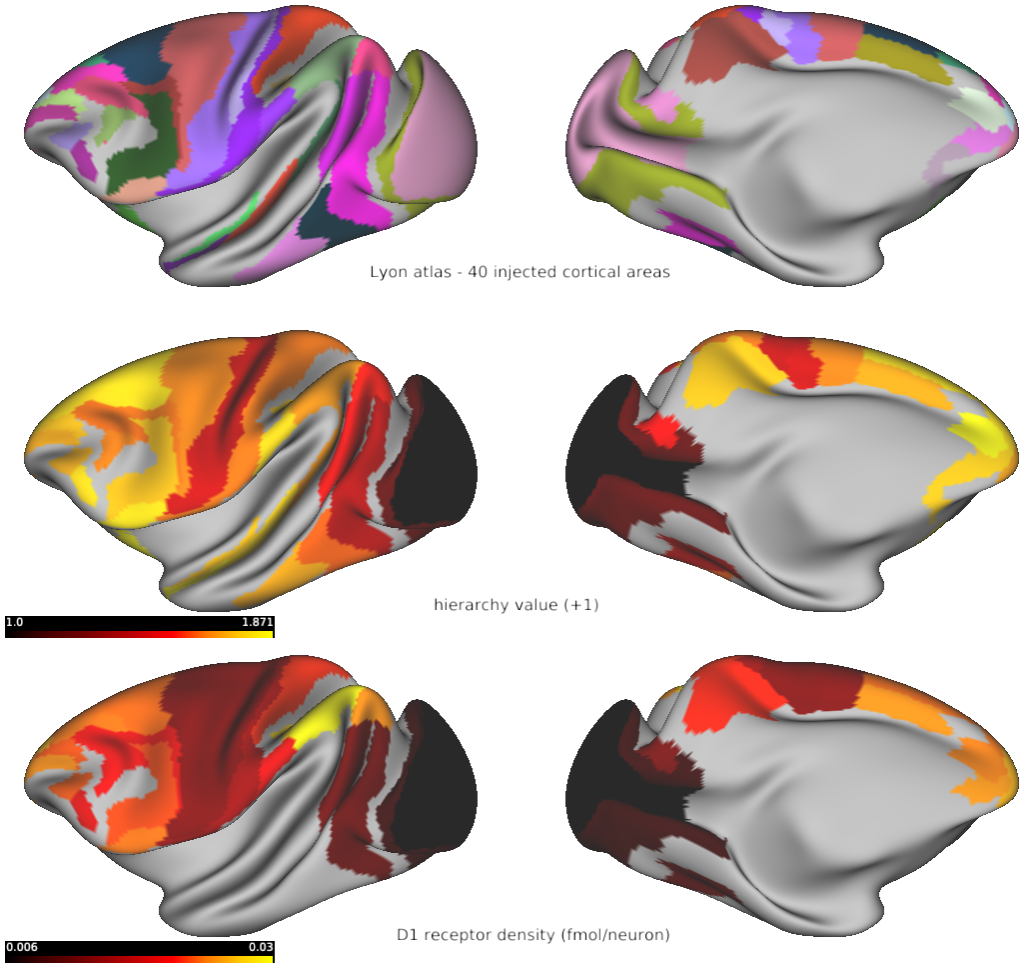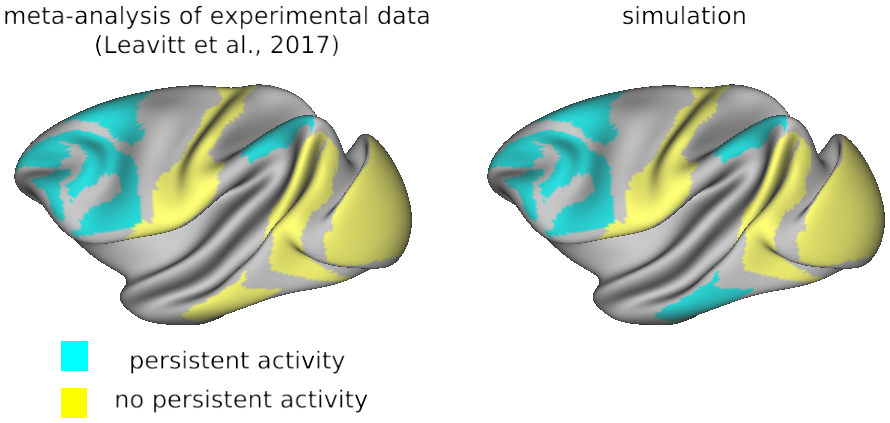FULL TITLE:
A dopamine gradient controls access to distributed working memory in the large-scale monkey cortex
SPECIES:
Macaque
DESCRIPTION:
This BALSA study contains the dopamine D1 receptor/neuron data, and the cortical hierarchy for 40 cortical areas.
An open-source Jupyter notebook implementation of our receptor and connectome-based biophysical model can be downloaded from hhttps://github.com/seanfw/dopamine-dist-wm
Main article: Froudist-Walsh, Sean, Daniel P. Bliss, Xingyu Ding, Lucija Rapan, Meiqi Niu, Kenneth Knoblauch, Karl Zilles, Henry Kennedy*, Nicola Palomero-Gallagher*, and Xiao-Jing Wang*. "A dopamine gradient controls access to distributed working memory in the large-scale monkey cortex." Neuron (2021). https://doi.org/10.1016/j.neuron.2021.08.024 *co-senior authors.
Meta-analysis in Fig. 3. from Leavitt, Matthew L., Diego Mendoza-Halliday, and Julio C. Martinez-Trujillo. "Sustained activity encoding working memories: not fully distributed." Trends in Neurosciences 40, no. 6 (2017): 328-346.
ABSTRACT:
Dopamine is required for working memory, but how it modulates large-scale cortex is unknown. Here we report that dopamine receptor density per neuron, measured by autoradiography, displays a macroscopic gradient along the macaque cortical hierarchy. This gradient is incorporated in a connectome-based large-scale cortex model endowed with multiple neuron types. The model captures an inverted-U-shaped dependence of working memory on dopamine, and spatial patterns of persistent activity observed in over 90 experimental studies. Moreover, we show that dopamine is crucial for filtering out irrelevant stimuli, by enhancing inhibition from dendrite-targeting interneurons. Our model revealed that an activity-silent memory trace can be realized by facilitation of inter-areal connections, and adjusting cortical dopamine induces a switch from this internal memory state to distributed persistent activity. Taken together, our work represents a cross-level understanding from molecules and cell types to recurrent circuit dynamics underlying a core cognitive function distributed across the primate cortex.
PUBLICATION:
Neuron
- DOI:
10.1016/j.neuron.2021.08.024
- Sean Froudist-Walsh
- Daniel P. Bliss
- Xingyu Ding
- Lucija Rapan
- Meiqi Niu
- Kenneth Knoblauch
- Karl Zilles
- Henry Kennedy
- Nicola Palomero-Gallagher
- Xiao-Jing Wang
- University of Lyon
- New York University
- Research Centre Jülich
-
Fig_1_D1R_density_hierarchy.scene
DESCRIPTION: Fig 1. Dopamine D1 receptor density and cortical hierarchy
SCENES: -
Fig_3_meta-analysis_vs_simulation.scene
DESCRIPTION: Fig. 3. Meta-analysis vs simulated delay period activity
SCENES:


